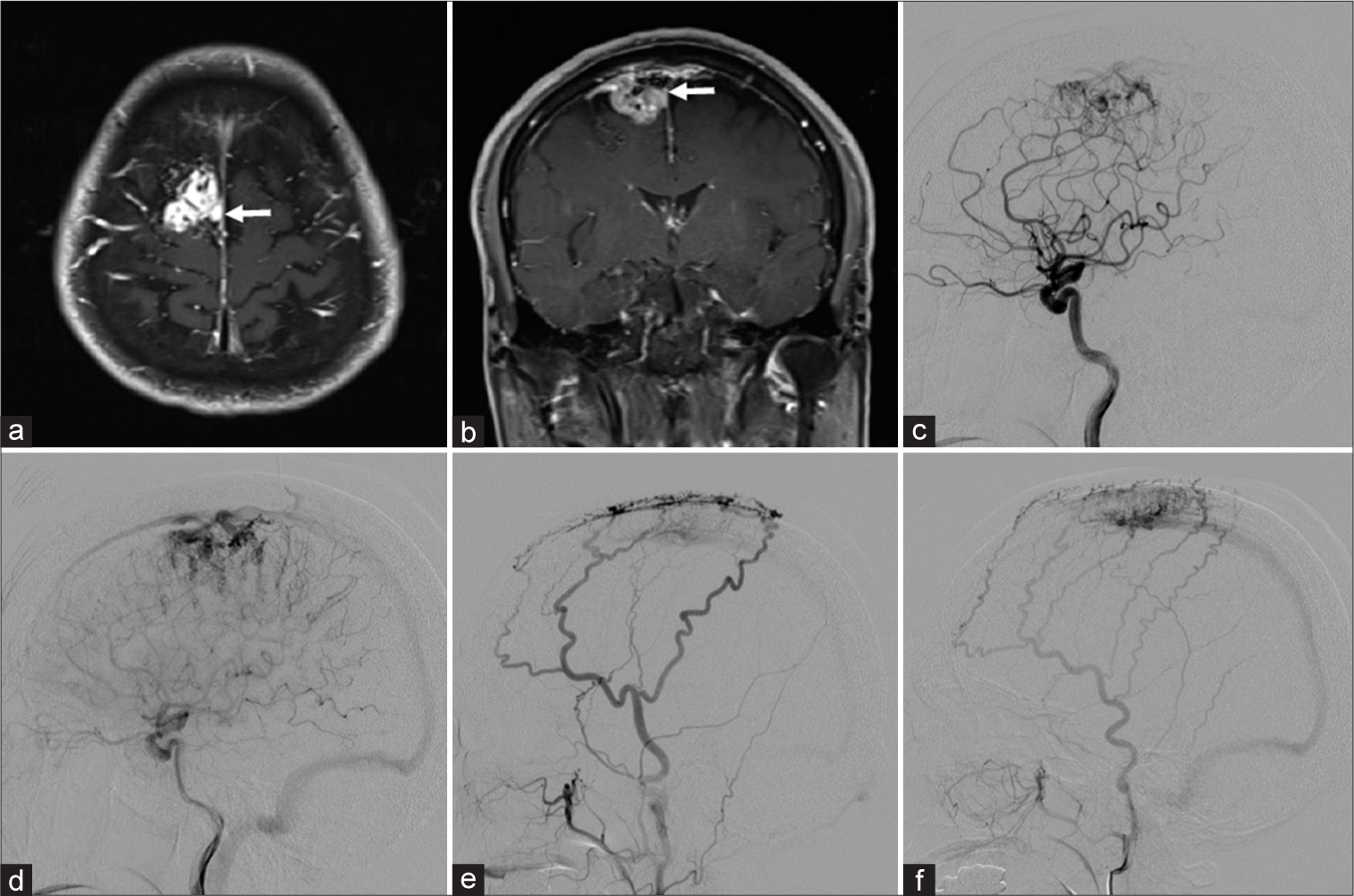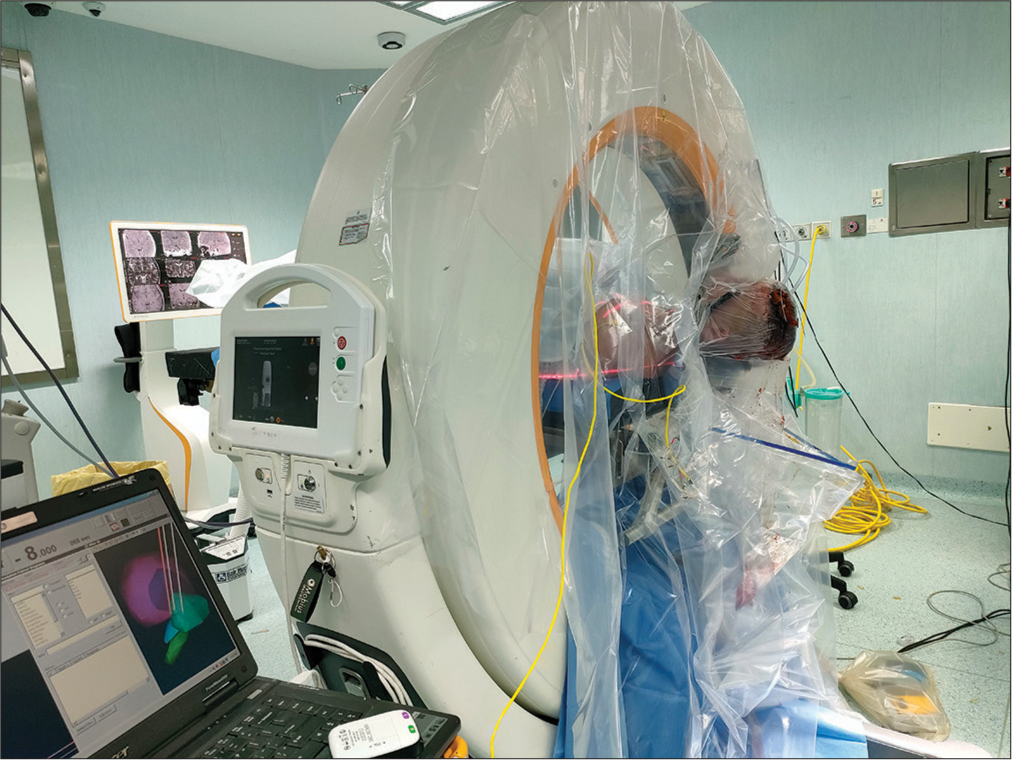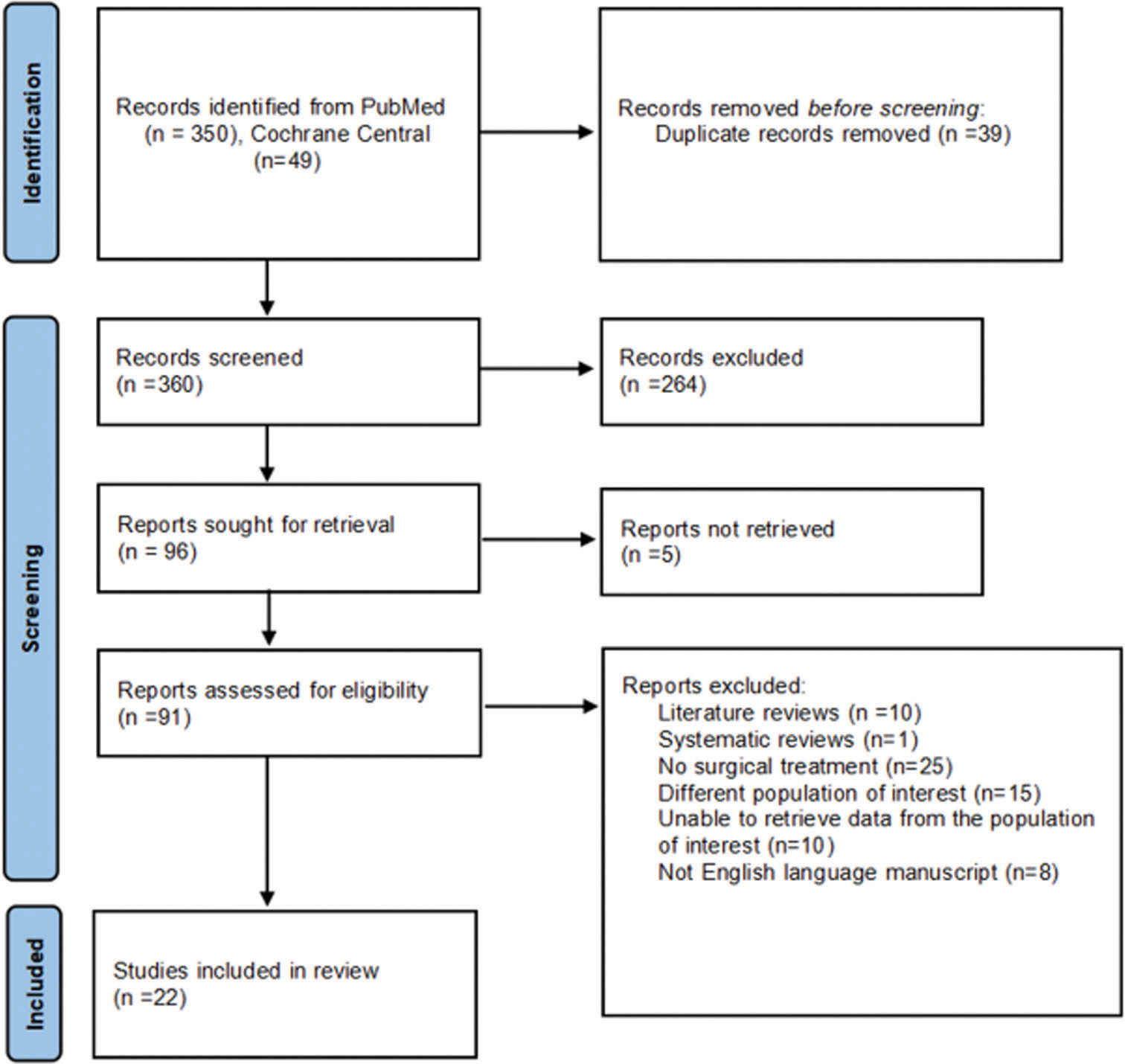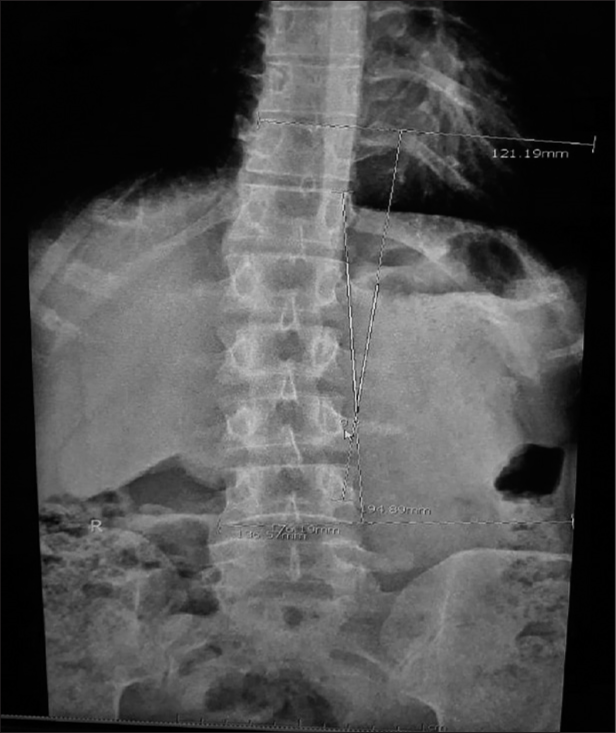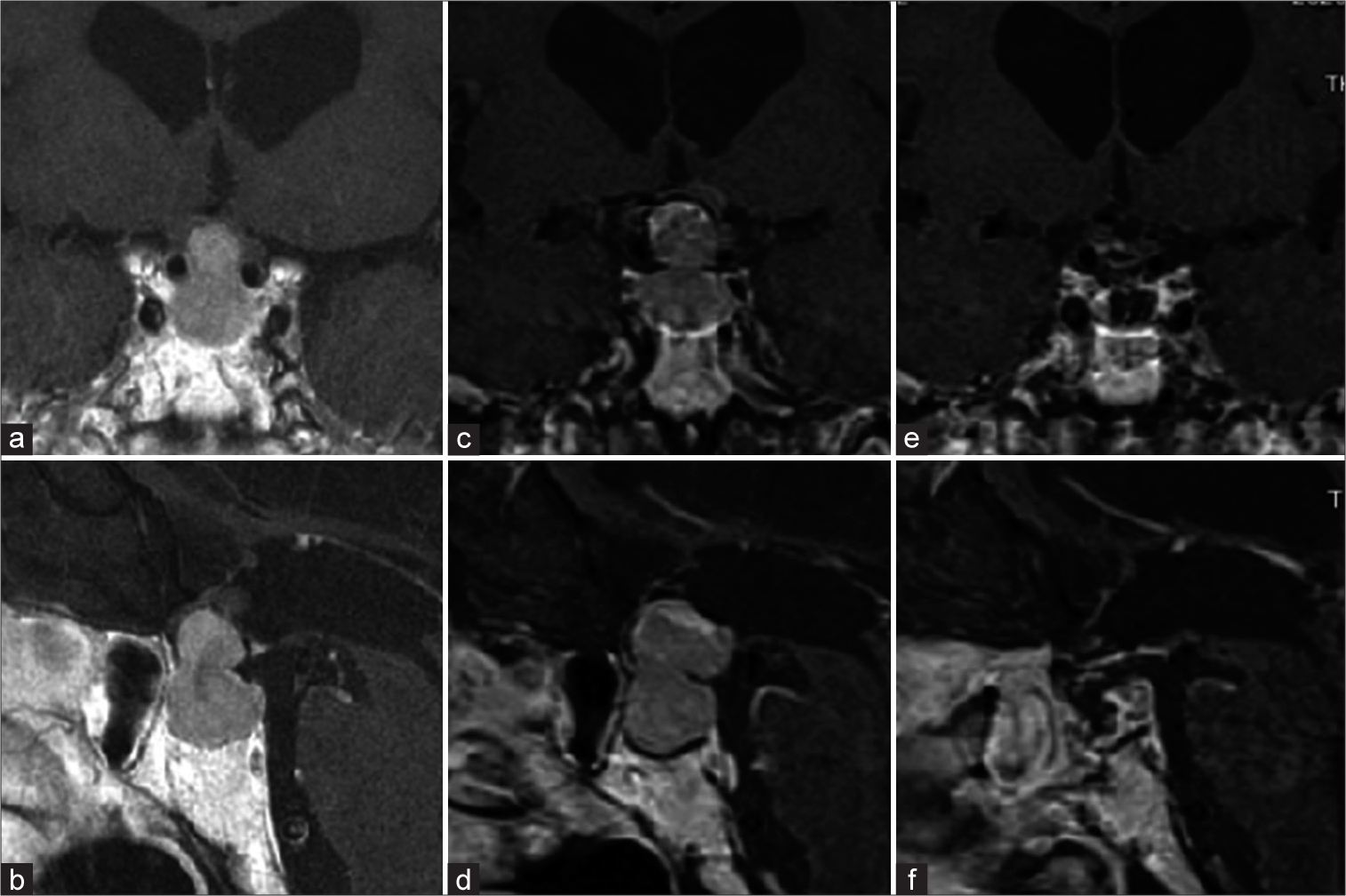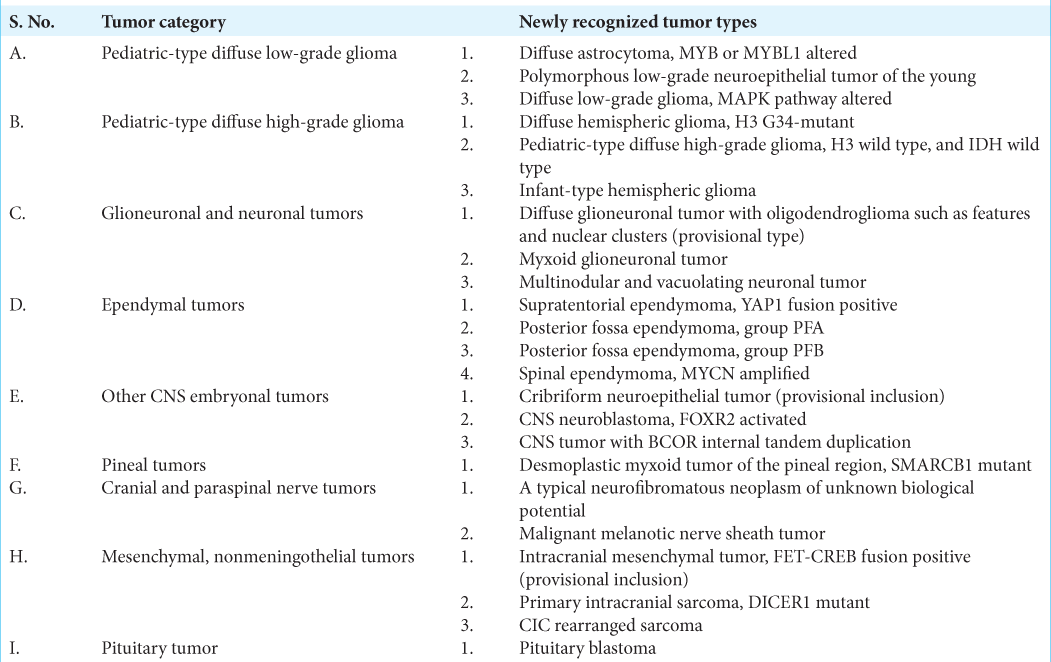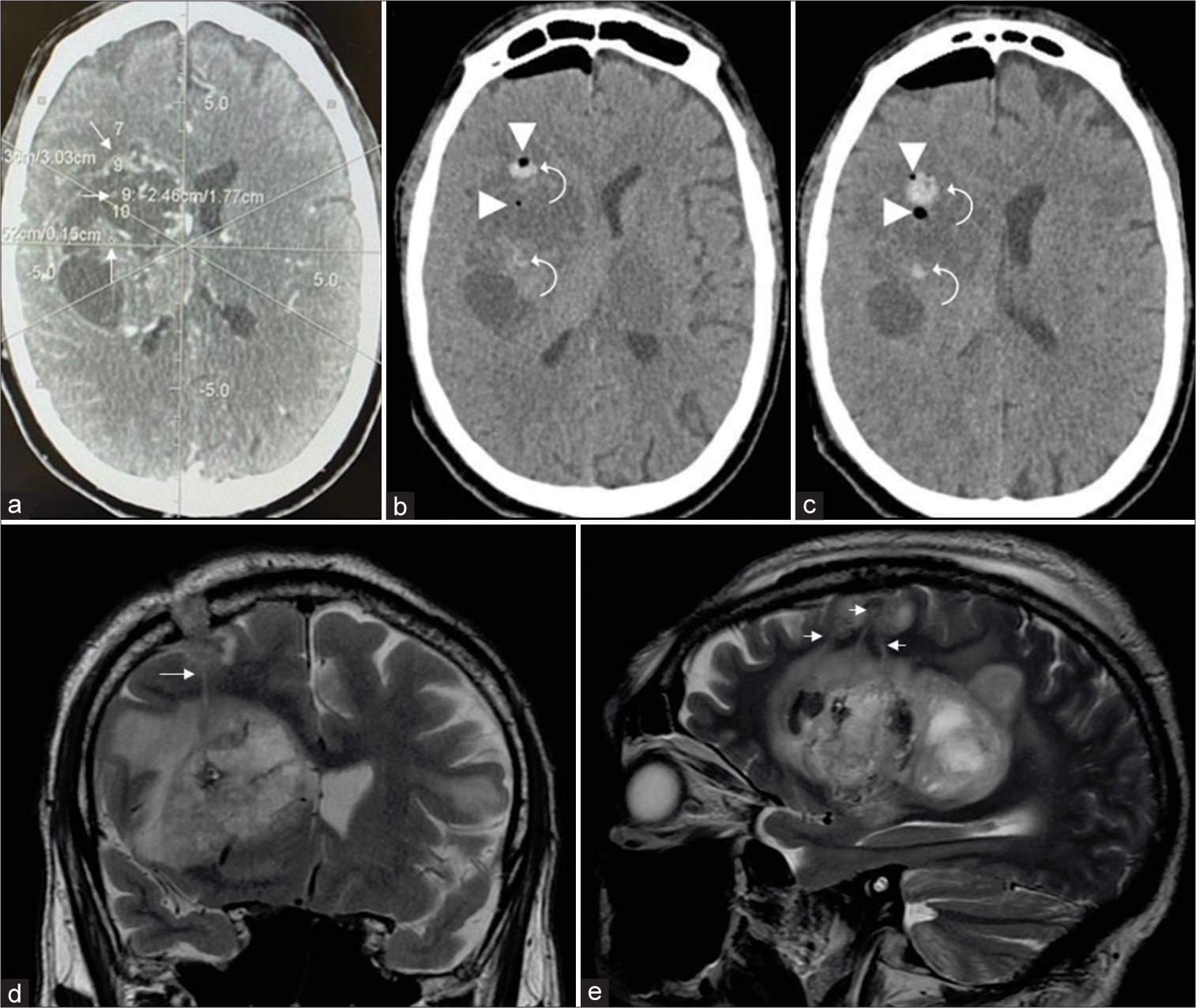Iatrogenic nerve injury and foot drop: Surgical results in 28 patients
Date of publication: 23-Jun-2022
Background: Most peroneal nerve injuries resulting in foot drop are secondary to trauma or iatrogenic. Foot drop can occur due to potential complications from the hip, lumbosacral spine, and knee surgeries, which are critical to diagnose and manage.
Superior sagittal sinus dural arteriovenous fistula with changes in angiographic findings associated with contiguous parasagittal meningioma: A case report
Date of publication: 23-Jun-2022
Background: Meningioma and dural arteriovenous fistula (dAVF) located at the same site are rare. The present case demonstrated the transformation of tumor feeding vessels into the pial feeder of the dAVF over time, which may help to elucidate the pathogenesis of tumor-associated dAVF.
Intraoperative mobile computed tomography in deep brain stimulation: Comparison between Airo CT and O-arm CT
Date of publication: 17-Jun-2022
Background: A new intraoperative mobile device, called Airo computed tomography (CT), is becoming increasingly used in surgery adding to the current most widespread intraoperative imaging in form of the O-arm CT device. Intraoperative CT imaging has the advantage to reduce the discomfort derived from the patient’s transfer from the operative room to the radiological unit and also the time of control or time of reposition in cases of lead misplacement. This is the first rapport on Airo CT device application in DBS surgery.
Ruptured traumatic posterior inferior cerebellar artery pseudoaneurysm: A case report and literature review
Date of publication: 17-Jun-2022
Background: Traumatic intracranial aneurysm (TICA) accounts for approximately 1% of cerebral aneurysms. There are few reports of TICA limited to the posterior inferior cerebellar artery (PICA-TICA).
Temporary standalone percutaneous fixation with pedicle screws for the treatment of subacute tuberculous osteomyelitis with kyphotic deformity in the lumbar spine
Date of publication: 17-Jun-2022
Background: Tuberculous (TB) osteomyelitis is a rare, but challenging infection, that mandates antituberculosis antibiotics, and potentially surgical intervention. Per the Gulhane Askeri Tip Akademisi (GATA) classification system, corrective reconstruction is indicated in severe cases, where the kyphotic deformity is >20° (GATA Class III). Here, we describe a case of BCG vaccine-induced lumbar TB osteomyelitis at the L1-2 level in a patient presenting with mechanical pain and a focal, nonfixed kyphotic deformity of 36.1°. Surgery consisted of percutaneous fixation with pedicle screws without debridement, fusion arthrodesis, or anterior reconstruction.
Surgical management of dropped head syndrome: A systematic review
Date of publication: 17-Jun-2022
Background: Dropped head syndrome (DHS) is uncommon and involves severe weakness of neck-extensor muscles resulting in a progressive reducible cervical kyphosis. The first-line management consists of medical treatment targeted at diagnosing underlying pathologies. However, the surgical management of DHS has not been well studied.
Incidence of radiographic scoliosis in asymptomatic young Pakistani adults
Date of publication: 17-Jun-2022
Background: Adolescent idiopathic scoliosis (AIS) is the most common scoliotic deformity of young adults. Screening of AIS is performed as part of the routine preemployment examination for physically demanding positions. We attempted to establish the incidence of clinically overt scoliosis in an adolescent (16 years old) and young adult (21 years old) population.
Apoplexy in sellar metastasis from papillary thyroid cancer: A case report and literature review
Date of publication: 17-Jun-2022
Background: Pituitary metastasis from papillary thyroid cancer (PTC) is rare and only a few cases have been reported.
A simplified overview of the World Health Organization classification of central nervous system tumors 2021
Date of publication: 17-Jun-2022
Background: Building on the 2016 updated fourth edition and the work of consortium to inform molecular and practical approach to CNS tumor taxonomy, the major dramatic change occurs in 2021 fifth edition by advancing the role of molecular diagnostics in CNS tumor classification. The present review summarizes the major general changes in the 2021 fifth edition classification and the specific changes in each taxonomic category.
Indicators of correct targeting in stereotactic biopsy of intracranial lesions
Date of publication: 17-Jun-2022
Background: Confirmation of whether a stereotactic biopsy was performed in the correct site is usually dependent on the frozen section or on novel tumor-specific markers that are not widely available. Immediate postoperative computed tomography (CT) or magnetic resonance (MR) is routinely performed in our service after biopsy. In this retrospective study, we have carefully analyzed these images in an attempt to determine the presence of markers that indicate appropriate targeting.



